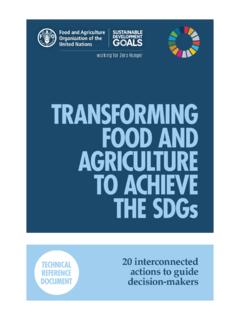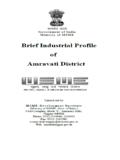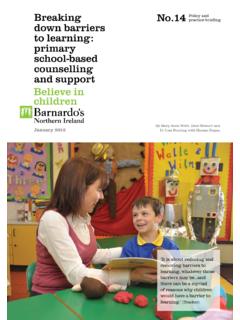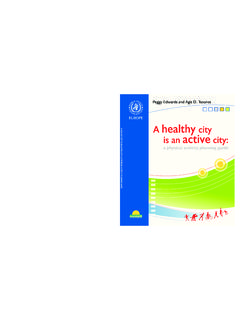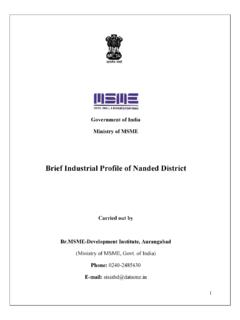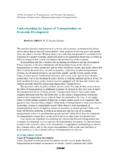Transcription of Food Nutrition Schools NFS FINAL - WHO/Europe
1 food and Nutrition policy for Schools A tool for the development of school Nutrition programmes in the European Region Programme for Nutrition and food Security WHO Regional Office for Europe Copenhagen 2006 ABSTRACT Healthy Nutrition interventions need to occur early in childhood and adolescence in order to prevent or reverse the adverse health effects of overweight and poor eating habits. Childhood and adolescence is a critical period for diets of high nutritional quality as the physiological need for nutrients is high relative to energy needs. In addition, many core eating habits and behavioural patterns are developed that may persist throughout adulthood.
2 Schools can provide an important opportunity for prevention, because they provide the most effective method of reaching large numbers of people, including youth, school staff, families and community members. Healthy food and improved Nutrition should be a high priority on every school agenda because of the positive affect on child well-being, and subsequent enhanced learning ability and academic performance. A single European school food and Nutrition policy cannot be formulated due to wide cross-country variation among schooling systems. It is therefore essential for each country, authority or school to decide which of the suggestions for school Nutrition and food policy are most appropriate and applicable to their circumstances.
3 Dietary guidelines are provided in Annex 1 for children in nursery school and preschool (3 7 years old) and students in primary and secondary Schools (7 18 years old). Keywords Nutrition POLICY Schools DIET standards GUIDELINES CHILD Nutrition ADOLESCENT Nutrition EUROPE EUR/06/5073063 Address requests about publications of the WHO Regional Office for Europe to: Publications WHO Regional Office for Europe Scherfigsvej 8 DK-2100 Copenhagen , Denmark Alternatively, complete an online request form for documentation, health information, or for permission to quote or translate, on the WHO/Europe web site at World Health Organization 2006 All rights reserved.
4 The Regional Office for Europe of the World Health Organization welcomes requests for permission to reproduce or translate its publications, in part or in full. The designations employed and the presentation of the material in this publication do not imply the expression of any opinion whatsoever on the part of the World Health Organization concerning the legal status of any country, territory, city or area or of its authorities, or concerning the delimitation of its frontiers or boundaries. Where the designation country or area appears in the headings of tables, it covers countries, territories, cities, or areas.
5 Dotted lines on maps represent approximate border lines for which there may not yet be full agreement. The mention of specific companies or of certain manufacturers products does not imply that they are endorsed or recommended by the World Health Organization in preference to others of a similar nature that are not mentioned. Errors and omissions excepted, the names of proprietary products are distinguished by initial capital letters. The World Health Organization does not warrant that the information contained in this publication is complete and correct and shall not be liable for any damages incurred as a result of its use.
6 The views expressed by authors or editors do not necessarily represent the decisions or the stated policy of the World Health Organization. CONTENTS Page List of boxes, figures and tables ..i Acronyms ..ii Glossary of terms .. iii Executive 1 Foreword .. 3 1. Health and Nutrition of school 4 Obesity .. 4 Dental caries .. 4 Lack of physical activity .. 5 Eating 5 Good Nutrition in 6 2. Designing a food and Nutrition policy for 8 Approaches to school food and Nutrition policy .. 8 Assembling a core action group .. 9 Carrying out a baseline assessment of Nutrition in the school .
7 10 Developing a food and Nutrition 10 Developing an action plan in the core action group .. 11 Action plan implementation, monitoring and 11 3. Elements of the food and Nutrition policy for 12 The school 12 Parents and care givers .. 12 Community 13 Local retailers and 13 Media and publicity .. 13 school curriculum .. 14 Life 14 Educational materials .. 15 The school environment .. 16 school 16 Breakfast 17 Vending 18 Fruit, vegetable and milk subscriptions .. 19 Access to water .. 21 school Nutrition and health services.
8 22 4. Recommendations for healthy eating and active lifestyles for children and 23 5. Guidance on designing children s diets .. 33 The food 33 school meal provision: practical implementation .. 38 food supply .. 45 Nutrition education and awareness .. 46 48 References .. 49 Annex 1 .. 55 Recommended Nutrient Intake for Children and Adolescents .. 55 Annex 2 .. 56 Nutrition Education Material from European 56 Annex 3 .. 57 Useful Internet Links .. 57 food and Nutrition policy for Schools page i List of boxes, figures and tables Fig. 1. Whole school implementation of a food and Nutrition policy.
9 10 Box 1. Examples of local partnerships ..19 Table 1: school milk subsidies in 2001 ..20 Box 2. Health passport Box 3. Twelve steps to healthy eating for children and adolescents ..24 Table 2. Physical activity recommendations: ..33 Fig. 2. The CINDI food Pyramid ..34 Table 3. Recommended number of daily servings and portion sizes: Breads and cereals .. 35 Table 4. Recommended number of daily servings and portion sizes: Fruit and vegetables .. 36 Table 5. Recommended number of daily servings and portion sizes: Meat, fish, poultry and alternatives .. 37 Table 6. Recommended number of daily servings and portion sizes: Milk and milk 37 Table 7: Meal guidance.
10 38 Table 8: Sample nutritional guidelines for school meals ..38 Box 4. Fussy Box 5. After school clubs ..42 Box 6. Fruit tuck shops ..43 Box 7. Examples of pupil and parent focussed food Table 9. Suggestions for healthy Table 10. Guidelines for basic food skills for children and food and Nutrition policy for Schools page ii Acronyms BBB Boost Better Breaks initiative BMI Body Mass Index CAP Common Agricultural Policy CINDI Countrywide Integrated Noncommunicable Disease Intervention EPHA European Public Health Alliance EPPI Evidence for Policy and Practice Information and Coordinating Centre ERIC Enuresis Resource and Information Centre EU European Union FAO food and Agriculture Organisation FSA food Standards











